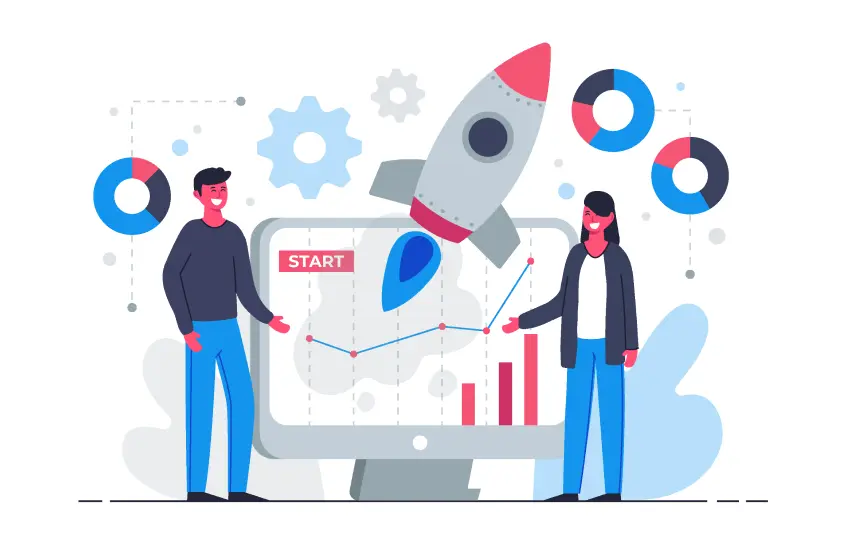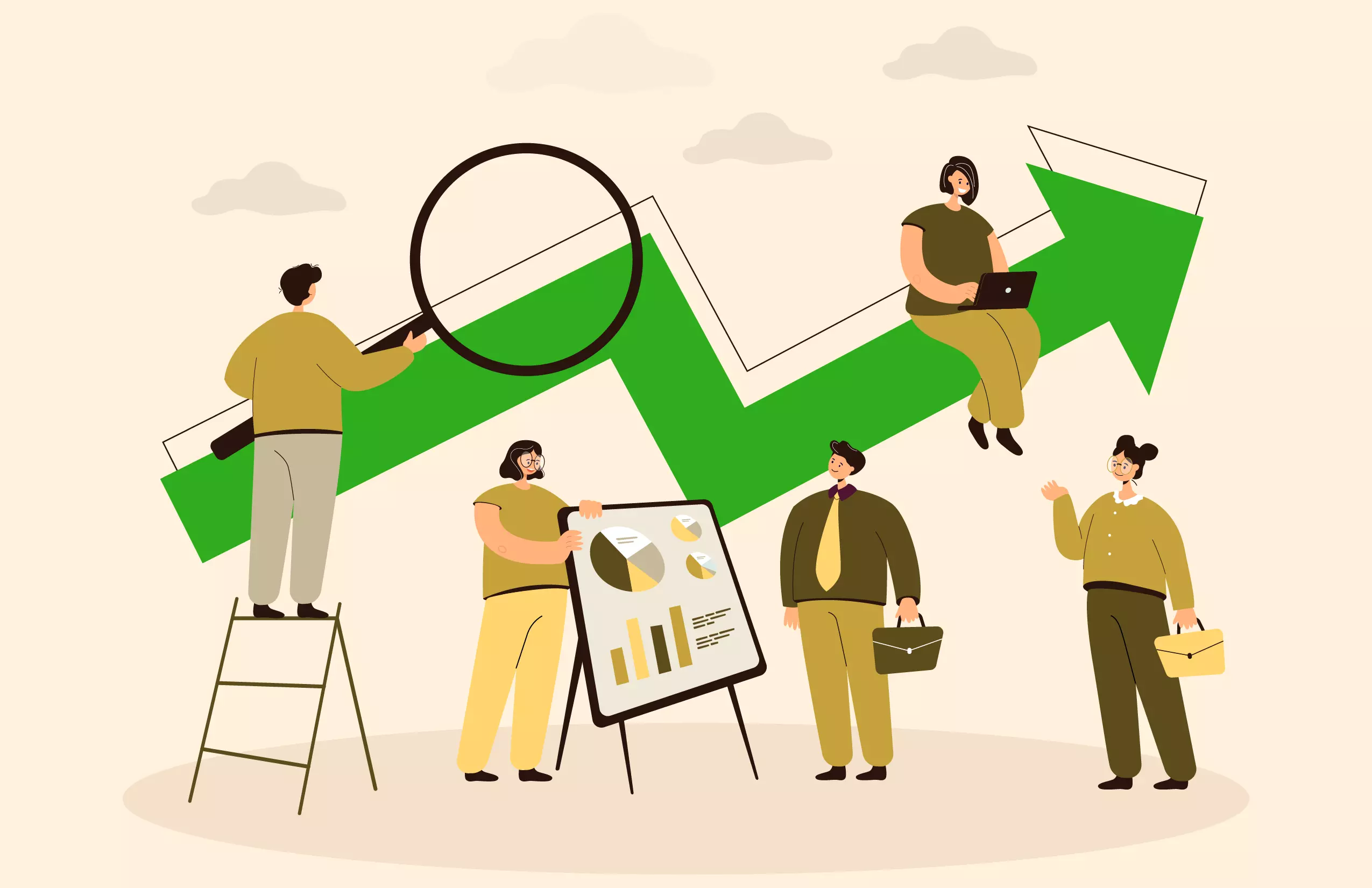
7 Top Trends In Sales Force Automation Expected To Boom In 2024
Table of Contents
One of the most important technologies in today’s business world is Sales Force Automation (SFA), which is transforming how companies handle their sales operations and use data to drive performance. In today’s highly competitive business environment, companies require more than simply gut feeling to succeed; they additionally require data-driven knowledge and automation technologies to stay flexible, make wise decisions, and give their clients outstanding service.
SFA’s primary goal is to generate leads, close agreements, and maintain continuous client relationships through the optimization and streamlining of sales operations. Sales teams can now concentrate on the things they do best—developing connections and completing deals—while also increasing productivity due to the developing trends in sales force automation.
What Is Sales Force Automation?
Several administrative, repetitive jobs, such as data entry and managing tasks, are part of the sales process. The practice of employing automation to carry out laborious human operations, known as sales automation, lowers manual labor costs, error rates, and timeframe. Many of these administrative responsibilities are automated by sales force automation software, freeing up salespeople’s time to focus on dealing with clients rather than navigating a CRM. Sales force automation, which is utilized by productive sales teams, provides transparency of a team’s workflow from the initial query to the closing, guaranteeing that no detail is overlooked.
7 Top Trends In Sales Force Automation To Boom In 2024
Customer Profiling And Analytics
To obtain a deeper understanding of the choices, interests, and buying actions of clients, artificial intelligence (AI) and machine learning (ML) are used in conjunction with sales force automation platforms to gather and evaluate client data. In the long run, these insights support sales teams in making more informed decisions, providing them with actual data and figures, and enabling them to obtain outcomes.
Businesses are starting to combine sales force automation solutions with their sales CRM software to better understand client behavior and interests and make necessary adjustments to their strategy. Salespeople are becoming more productive because of AI and ML-backed SFA solutions, which free them up to concentrate on activities that require their attention and time.
Outsourcing The Sales Operations
The outsourcing of some aspects of the sales supply chain is one of the main developments in sales force operations. The ability for third-party vendors to manage a business’s complete end-to-end selling procedure is something new with sales automation.
Based on the probability of transforming that particular kind of individual, businesses coordinate with their sales agents to specific customers. They additionally utilize big data to discover leads and marketplaces for various sections via distinct offers and platforms. For the sales team, this implies switching to a pay structure wherein salary is determined by the number of new clients obtained rather than the quality of the service.
Artificial Intelligence And Data Intelligence
Companies across all levels and sectors use AI and ML to maximize sales teams’ effectiveness and position them to increase sales as well as other important metrics. The integration of AI and ML into sales automation platforms, both current and future, is happening gradually and doesn’t seem to be shutting down.
Data-driven intelligence and artificial intelligence (AI) are expected to be crucial components of the sales force of the foreseeable future. The sales force automation is ready to provide more individualized client interactions with its AI technology. The main goal will be to use AI and real-time data to enhance the personal, meaningful, and distinctive nature of each client engagement.
Sustainable And Voice-Activated CRM
Sustainability is becoming a basic necessity rather than just a trendy term. Trends in sales force automation are committed to sustainability and will assist companies in monitoring and minimizing the environmental impact they have. Anticipate features that facilitate the tracking of carbon footprints, environmentally conscious supply chain administration, and the integration of sustainability indicators into company tactics.
Voice-activated CRM solutions are going to be more and more common. Think about employing voice commands to retrieve data, manage tasks in the sales force, and even make modifications. This trend in sales force automation will revolutionize the way sales staff in the field operate by boosting efficiency and making CRM available on the move.
Flow Orchestration
Using Flow Orchestration, a sophisticated automated workflow method, companies can easily design and oversee intricate, complex procedures inside the sales force. It divides complex procedures into small, doable activities, or “flows.” Permissions, data updates, as well as external integrations can be a part of these flows. Because of their intuitive layout and design, they can be used by both programmers and non-programmers.
By eliminating human errors, streamlining repetitive duties, and guaranteeing consistency in procedures, flow orchestration improves productivity. By making it easier for tasks and data to move between departments, it enhances collaboration within teams. Additionally, flow orchestration gives companies real-time visibility into the state of their processes, empowering them with the ability to make data-driven choices.
Blockchain Technology
We’ve all seen firsthand how successful the technology of blockchain has become over the past few years. There are going to be a tonne of advantages from the technology in the years to come. Sales force automation blockchain technology is a reliable simple code system that contributes to CRM’s increased functionality.
It is highly tuned for salesforce lightning and is based on the Hyperledger Sawtooth technology to build dependable associate networks. Users will be able to share various types of information with their customers and other parties on a safe platform. In addition, transferring, verifying, and protecting information stored on blockchain, helps sales force automation users and various customers to save their resources, time, and money.
Data Integration And Cloud Computing
According to the most recent trends in sales force automation for 2023, data analytics and business intelligence are critical to the continued growth and achievement of any business, particularly in difficult times. To manage uncertainty, reduce risks, and maximize company value, real-time data insights are essential. This gives systems the ability to easily access, handle, and retain large amounts of data from various places and resources via the Internet.
Sales force automation leverages cloud computing and data connectivity to provide its customers with a single, flexible platform that can handle complex, heterogeneous data needs. This calculated action creates a more integrated and efficient data environment by helping users link their data across devices, apps, and cloud-based services.
Conclusion
An effective corporate tool that can assist organizations in enhancing processes and customer relations is sales force automation. The market trends for sales force automation appear promising going forward, emphasizing customer-focused approaches and revolutionary technologies. Companies that use sales force automation will be in an ideal position to benefit from these developments and enhance their marketing, sales, and customer support initiatives.
Companies can better prepare for the coming years by monitoring trends in sales force automation. By anticipating future needs and making proactive adjustments to the plans and products, businesses can reduce the likelihood of lagging in a market that is changing quickly. Additionally, sales force automation offers all of the features companies require to raise their business’s client retention level.













